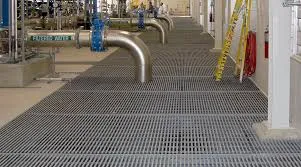
-
 Afrikaans
Afrikaans -
 Albanian
Albanian -
 Amharic
Amharic -
 Arabic
Arabic -
 Armenian
Armenian -
 Azerbaijani
Azerbaijani -
 Basque
Basque -
 Belarusian
Belarusian -
 Bengali
Bengali -
 Bosnian
Bosnian -
 Bulgarian
Bulgarian -
 Catalan
Catalan -
 Cebuano
Cebuano -
 China
China -
 China (Taiwan)
China (Taiwan) -
 Corsican
Corsican -
 Croatian
Croatian -
 Czech
Czech -
 Danish
Danish -
 Dutch
Dutch -
 English
English -
 Esperanto
Esperanto -
 Estonian
Estonian -
 Finnish
Finnish -
 French
French -
 Frisian
Frisian -
 Galician
Galician -
 Georgian
Georgian -
 German
German -
 Greek
Greek -
 Gujarati
Gujarati -
 Haitian Creole
Haitian Creole -
 hausa
hausa -
 hawaiian
hawaiian -
 Hebrew
Hebrew -
 Hindi
Hindi -
 Miao
Miao -
 Hungarian
Hungarian -
 Icelandic
Icelandic -
 igbo
igbo -
 Indonesian
Indonesian -
 irish
irish -
 Italian
Italian -
 Japanese
Japanese -
 Javanese
Javanese -
 Kannada
Kannada -
 kazakh
kazakh -
 Khmer
Khmer -
 Rwandese
Rwandese -
 Korean
Korean -
 Kurdish
Kurdish -
 Kyrgyz
Kyrgyz -
 Lao
Lao -
 Latin
Latin -
 Latvian
Latvian -
 Lithuanian
Lithuanian -
 Luxembourgish
Luxembourgish -
 Macedonian
Macedonian -
 Malgashi
Malgashi -
 Malay
Malay -
 Malayalam
Malayalam -
 Maltese
Maltese -
 Maori
Maori -
 Marathi
Marathi -
 Mongolian
Mongolian -
 Myanmar
Myanmar -
 Nepali
Nepali -
 Norwegian
Norwegian -
 Norwegian
Norwegian -
 Occitan
Occitan -
 Pashto
Pashto -
 Persian
Persian -
 Polish
Polish -
 Portuguese
Portuguese -
 Punjabi
Punjabi -
 Romanian
Romanian -
 Russian
Russian -
 Samoan
Samoan -
 Scottish Gaelic
Scottish Gaelic -
 Serbian
Serbian -
 Sesotho
Sesotho -
 Shona
Shona -
 Sindhi
Sindhi -
 Sinhala
Sinhala -
 Slovak
Slovak -
 Slovenian
Slovenian -
 Somali
Somali -
 Spanish
Spanish -
 Sundanese
Sundanese -
 Swahili
Swahili -
 Swedish
Swedish -
 Tagalog
Tagalog -
 Tajik
Tajik -
 Tamil
Tamil -
 Tatar
Tatar -
 Telugu
Telugu -
 Thai
Thai -
 Turkish
Turkish -
 Turkmen
Turkmen -
 Ukrainian
Ukrainian -
 Urdu
Urdu -
 Uighur
Uighur -
 Uzbek
Uzbek -
 Vietnamese
Vietnamese -
 Welsh
Welsh -
 Bantu
Bantu -
 Yiddish
Yiddish -
 Yoruba
Yoruba -
 Zulu
Zulu
grp demister
Understanding GRP Demisters and Their Importance
GRP (Glass Reinforced Plastic) demisters are essential components in various industrial processes, particularly in the oil and gas, chemical, and power generation sectors. Their primary function is to separate liquid droplets from gas streams, ensuring that the final output of gas is as free from moisture as possible. This process is crucial for maintaining efficiency and safety in operations, making GRP demisters a vital element in air and gas handling systems.
How GRP Demisters Work
GRP demisters operate on a relatively straightforward principle of coalescence. When a gas stream containing moisture passes through the demister, the design of the demister encourages smaller liquid droplets to collide with each other, forming larger droplets. These larger droplets, being heavier, then fall due to gravity, effectively removing them from the gas stream. This process is further enhanced by the unique properties of GRP material, which is both lightweight and resistant to corrosion and degradation. This makes GRP demisters particularly suitable for harsh environments where traditional materials may fail.
Advantages of GRP Demisters
One of the primary advantages of GRP demisters is their durability. Unlike metal demisters, which can corrode under certain conditions, GRP structures are designed to withstand various environmental stressors. Their resistance to chemical attack and moisture allows them to function optimally in aggressive industrial settings. Additionally, GRP demisters are often lighter than their metal counterparts, which simplifies installation and maintenance processes.
grp demister

Another significant advantage is their cost-effectiveness. The production of GRP materials and their long lifespan means that they often present a more affordable option in the long run, despite potential higher initial costs compared to traditional materials. This makes GRP demisters not only practical but also economically viable for large-scale industrial applications.
Applications in Industry
The use of GRP demisters spans multiple industries. In the oil and gas sector, they are used in separators and scrubbers to ensure that the natural gas produced is free from water and liquid hydrocarbons. In chemical processing, they help maintain the integrity of gases used in various reactions by preventing the interference of liquid phase components. Similarly, in power generation, they play a critical role in reducing the moisture content of steam before it enters turbines, thus enhancing efficiency and preventing damage.
Conclusion
In summary, GRP demisters are a pivotal technology in the industrial landscape. Their ability to efficiently separate liquid from gas streams significantly contributes to operational efficiency and safety. The durability, cost-effectiveness, and versatility of GRP demisters make them an attractive choice for industries looking to improve their processes. As industries continue to evolve and seek sustainable solutions, the role of GRP demisters will likely expand, further underscoring their importance in modern manufacturing and production methodologies. Understanding and utilizing these systems can lead to improved operational performance and increased reliability across various applications.
Latest news
-
Exploring the Benefits of Top Hammer Drifter Rods for Enhanced Drilling PerformanceNewsJun.10,2025
-
High-Precision Fiberglass Winding Machine for GRP/FRP Pipe Production – Reliable & Efficient SolutionsNewsJun.10,2025
-
FRP Pipes & Fittings for Shipbuilding - Corrosion-Resistant & LightweightNewsJun.09,2025
-
Premium FRP Flooring Solutions Durable & Slip-ResistantNewsJun.09,2025
-
Premium Fiberglass Rectangular Tanks Durable & Lightweight SolutionNewsJun.09,2025
-
Tapered Drill String Design Guide Durable Performance & UsesNewsJun.09,2025









